Atomic needs no introduction—they are among the biggest brands in the ski touring world, and when considering the ski brands under the same Amer Sports umbrella (Salomon and Armada), they make up a significant chunk of the market. In relation to the other Amer brands, Atomic certainly has the most robust ski touring lineup, with three boot platforms and 11 touring ski models, ranging from 109mm considered here down to 65mm skimo race models.
The skinnier Atomic touring models have been hard to keep up with, with a slew of skis in the 80-90mm range, including regular and UL builds in some models. It’s perhaps a good reminder that I ought to reach out for a better differentiation and explainer of all the models on offer. The wider skis have been updated over the years, but certainly, clear differentiations exist. The previous Backland 107 was a favorite of THR writers and friends, and the new ski came with some reservations and high expectations.

Atomic replaced both the Backland 100 and 107 with Backland 101W, 102, 108W, and 109 models. These models tout more wood and less carbon for both environmental and performance reasons. This trend continues for next year with Blizzard removing the carbon drive backbone from the Zero G line—it seems in the ever-changing ski landscape, carbon is on the outs. I wonder how much of this is related to the common “I don’t like carbon skis” sentiment that I often hear from people who prefer heavier and damp skis (that often still have carbon stringers and laminates).
Design Highlights
The new Atomic skis take on an especially svelte character. This is likely the most prominent characteristic of the Backland 109. At 1505g in 184cm length, I would put the Backland on the fringe of suspiciously light. As mentioned above, the construction is heavy on (light) woods and light on carbon. We have an interesting experiment: Is carbon the driver of skis feeling too light/chattery/deflection-prone, or is weight the driving factor? I suspect the answer is a little bit of both.
The other differentiating feature of the Backland 109, relative to similar models, is the high and strong camber pocket underfoot. It’s no secret that I enjoy flat and reverse camber skis when I am seeking soft snow in the backcountry, so a powder-oriented ski with significant camber had me a bit skeptical of the Backland’s performance in wind effect and other challenging conditions. Meanwhile, I was intrigued by the possibility of higher energy characteristics in 2-D snow as well.
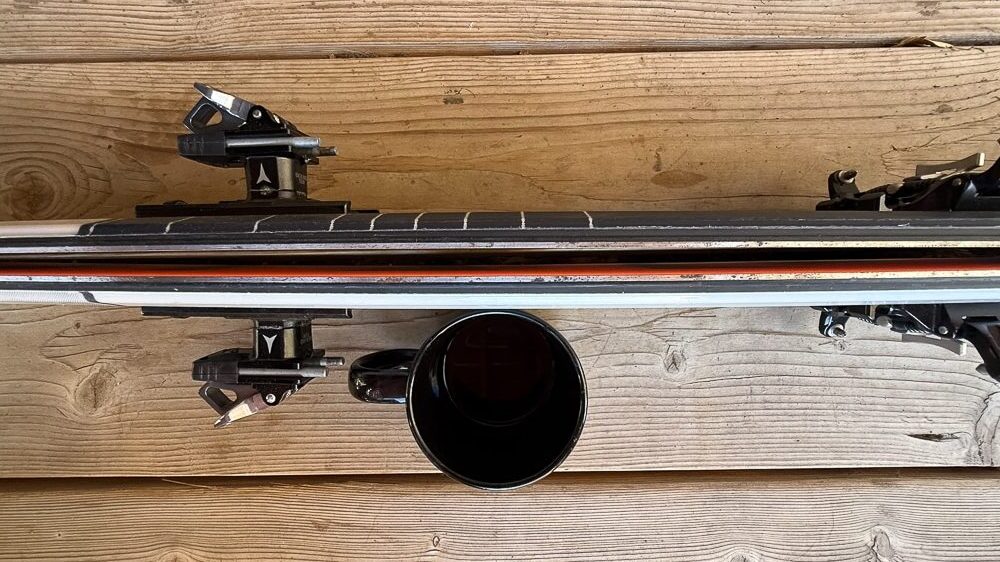
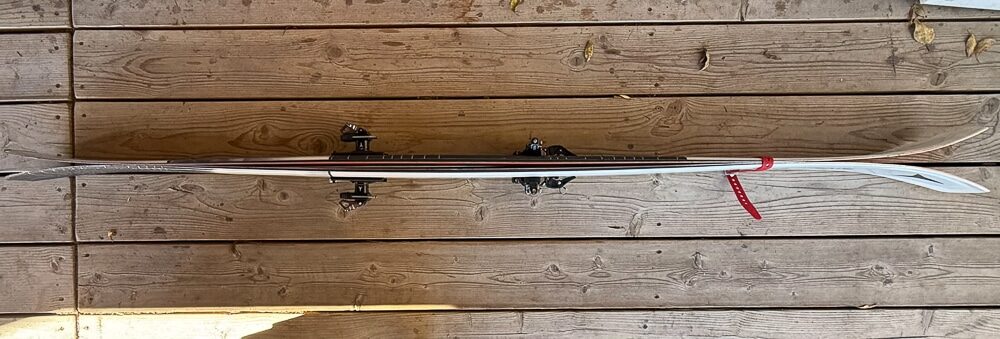
Aside from the unique weight and camber, the Backland 109 has many of the trademark features of a modern (Atomic) progressive freeride ski. Diving into this, we have a big, tapered shovel with Atomic’s HRZN tech (think spoon-shaped, 3D tip). Deep rocker lines and ample tip splay combine with a relatively soft flex for what looks and feels like a big and floaty tip profile. A medium (19m) turn radius and a mini sidewall underfoot round out the stiffer, cambered midsection. The -6cm mount point is a dead giveaway of the new Backland’s progressive nature. Meanwhile, the tail has a healthy dose of rocker as well. I would characterize it as approaching the maximum amount of tail splay that maintains all the touring functionality of a flat-tailed touring ski, rather than the nuisance (in my opinion) of a twin tip. The tail has a tapered, pintail shape and feels stiffer and more supportive than the tip.
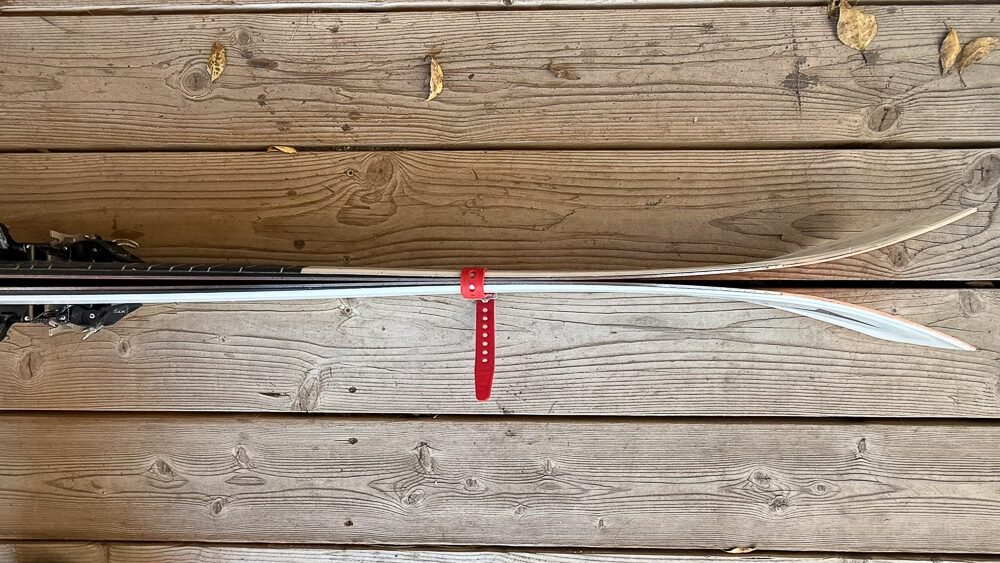
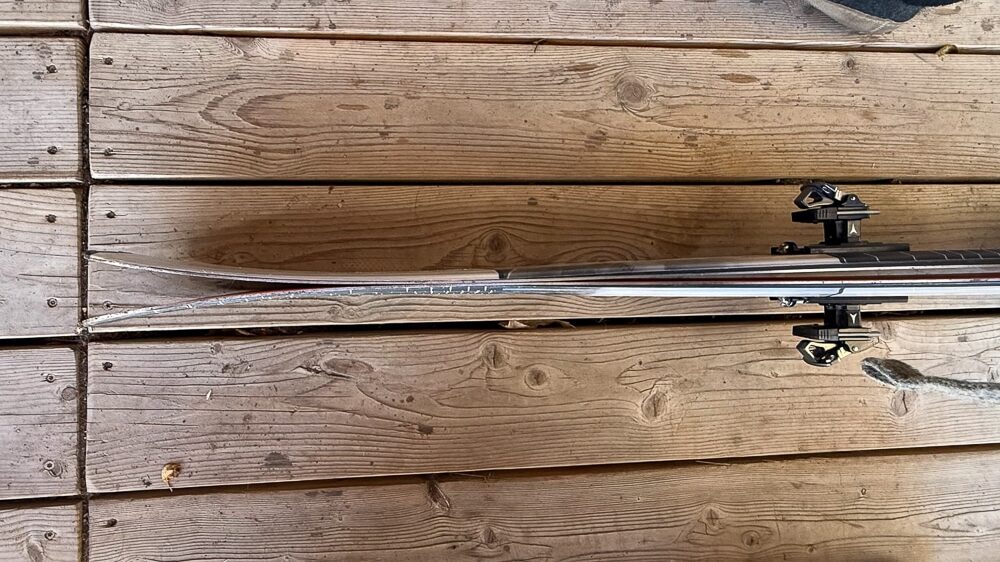
On the whole, the Backland 109, even in the not-too-long 184 cm length, looks and feels like a big ski in hand and on foot. I’ve never felt this picking up something like a 184 cm 4FRNT Hoji. I’m not sure this translates significantly to on-snow performance, but given other characteristics, especially the centimeter or so of camber per ski, upsizing is likely unnecessary here, and may exacerbate some of the limitations of the Backland 109 that we will discuss below.
Testing Setup
Boots, Bindings, Skins
I tested the Backland 109 with a set of Atomic Backland Pure bindings—sans base plates on the heels to lower the binding delta a few millimeters (be careful of dimpling your bases when removing the base plates!). I mounted on the recommended line and mostly used my Atomic Backland XTD boots, but subbed in the Scarpa 4Quattro Pro, Zero G Peak, Head Crux, and Dynafit Ridge at times.
As for boot pairings, I would say the Backland XTDs are very versatile and are an appropriate boot match for the Backland 109. The 4Quattro often felt like overkill for the skis’ lightweight and forgiving nature, while it also didn’t beg to be skied with a 1kg boot like some reverse camber skis, such as the Hoji or Heritage Lab BC110. A 1300g-ish, two-plus buckle boot, like the Backland XTD or Dynafit Ridge, seemed like a very appropriate pairing.
Skin compatibility was straightforward with the Backland 109’s somewhat squared-off tip, which worked with Pomoca and Contour wire loops as well as Ski Trab Attivo tips. The tail protector is notched and holds any standard tail clip well.
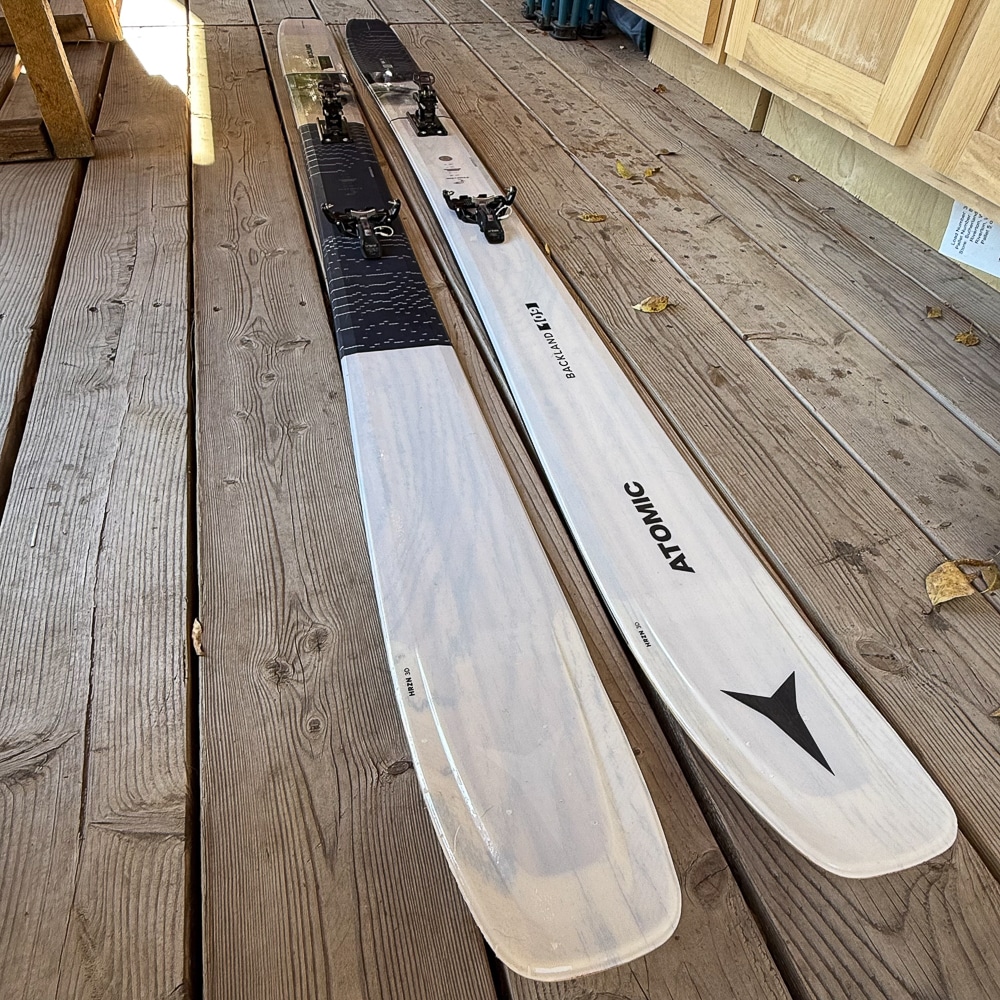
Field Testing
Powder/soft snow
Certainly, powder snow is the happy place for the Backland 109. As one of the lightest mainstream skis in the 110mm-ish powder touring category, the Backland 109 is an accessible and great option for powder touring. In a blind test, I don’t think I would ever guess that I was on a ski with significant camber when I’m skiing the Backland in great powder. It feels loose, pivots and maneuvers well at low speed, and floats and planes well. To be clear, it doesn’t have the same level of slash and slarve playfulness as something like a Hoji, but looking at the profile, I might have expected to feel quite locked into a turn shape—this was not the case in practice. Relative to a reverse camber powder ski, the Backland is much more forgiving to a forward stance, while playing nicely with the more centered stance that lighter boots often demand.
Five-star powder performance with a playful character and an easy/forgiving fore-aft balance. Very fun.
Crud/tracked/variable snow
If I couldn’t have guessed the presence of all that camber in deep and light powder, I certainly could feel the adverse effects of camber when that powder got hot, wind-affected and/or turned breakable. The rockered and tapered tips and tails mitigated the locked-in feel that camber provides to some degree, but overall, the Backland felt like a bit of a handful in some of these more challenging conditions, with speed limits definitely applying.
In tracked snow and crud, the size and weight of the Backland 109 present some inherent limitations. They suffered from some tip deflection and could feel a bit squirrely. Perhaps this speaks a bit to the carbon vs. total weight debate I alluded to above; total weight seems to win here. The big and light nature of the Backland just means there is a lot of surface area without a ton of mass to help limit deflection and torquing.
This may sound a bit negative, but in practice, none of these limitations/flaws were that bad. I like to give skis a pass/fail for breakable and bad snow; the Backland gets a pass.
Firm Snow/Steeps
In the world of soft-snow-oriented ski performance and the necessary tradeoffs, it seems like the options are reverse camber, which sacrifices performance on firm snow, or adding some camber for firm snow reliability at the cost of breakable/crud performance. The Backland 109 sits firmly in the latter camp. It had great “bite” on firm snow, and the 19m radius plus fairly straight tip profile (not a ton of taper) made for plenty of edge contact without the hookiness sometimes associated with lots of camber and a medium turn radius. I would say the edge grip and confidence in steep terrain were as good as the Moment Deathwish, without the annoyances the twin tip presents on that ski. The stiff camber is fairly energetic, and seems to suit linked, short radius turns, rather than one-turn-at-a-time steep skiing.
On the whole, this is a powder ski that I would trust to take into more uncertain high mountain conditions, where powder skiing is the goal, but firm turns are a possibility to be prepared for.
Resort Skiing/Groomers
In the in-bounds, resorts touring or lift riding worlds, the Backland 109 is a strong contender for one of the best lightweight powder skis that might hold its own in-bounds. The tip deflection and inherent limitations of such a big, light ski certainly limit full-on charging in most resort conditions. Despite this, the lightweight makes it reasonable for resort uphilling. On the downhill, the copious camber is excellent for adding some suspension and damping to the light ski. Combined with its forgiving fore-aft balance and easy-to-maneuver turn shape, the Backland 109 is among the more reasonable 1500g skis I have used in the resort.
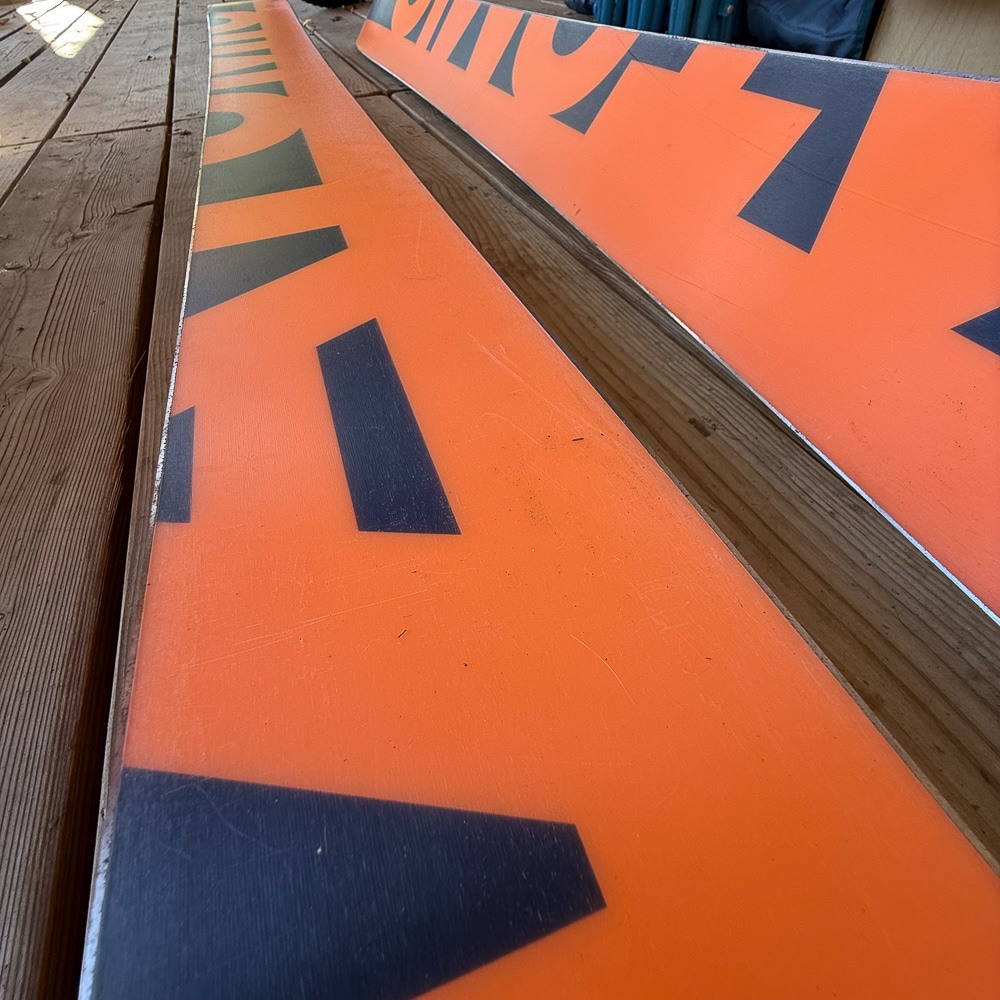
Conclusion
On one hand, it’s easy for me to jump back to the Hoji or Heritage Lab BC110 when I am after a medium-wide powder ski. The slashing and pivoting character of those skis is simply the best. Diving a little deeper, though, the Backland 109 achieves good to great powder performance with a wider sweet spot, an impressive 1500g weight, and more versatility for firm snow.
For skiers in powdery locales—the Tetons, British Columbia, etc.—the Backland 109 might make a lot of sense as a lightweight daily driver. I imagine the Backland 102 would also fill a similar role in less snowy areas. I could see myself being pretty content here in the Tetons, skiing the 109 as a one-ski quiver, perhaps swapping to something more skinny come April/May when the powder becomes scarce and long days of 2D snow are on the docket.
Specs
Available lengths (cm): 176, 184 [tested], 189
Weight: 1505g
Dimensions (mm): 135-109.5-124 [184]
Turn radius (m): 19m
Core: Poplar/Caruba
Build Comments: Less carbon = better damping and less environmental impact
Shape: Significant tip/tail rocker, strong camber underfoot, big, light shovels
Recommended Mount Point (cm from center): -6cm
Drill size: 4.1x9mm
Similar Models: Faction La Machine Mega, Moment Wildcat Tour 108
Price: $799.95

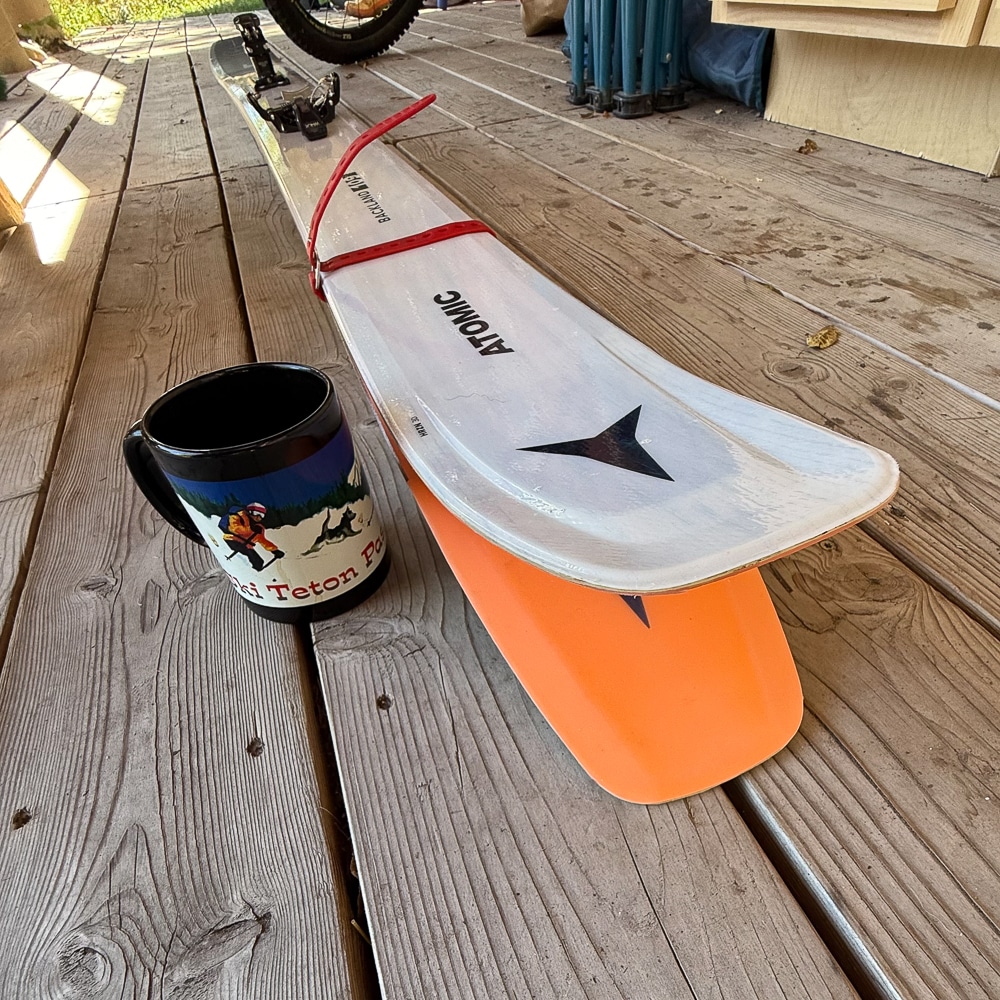
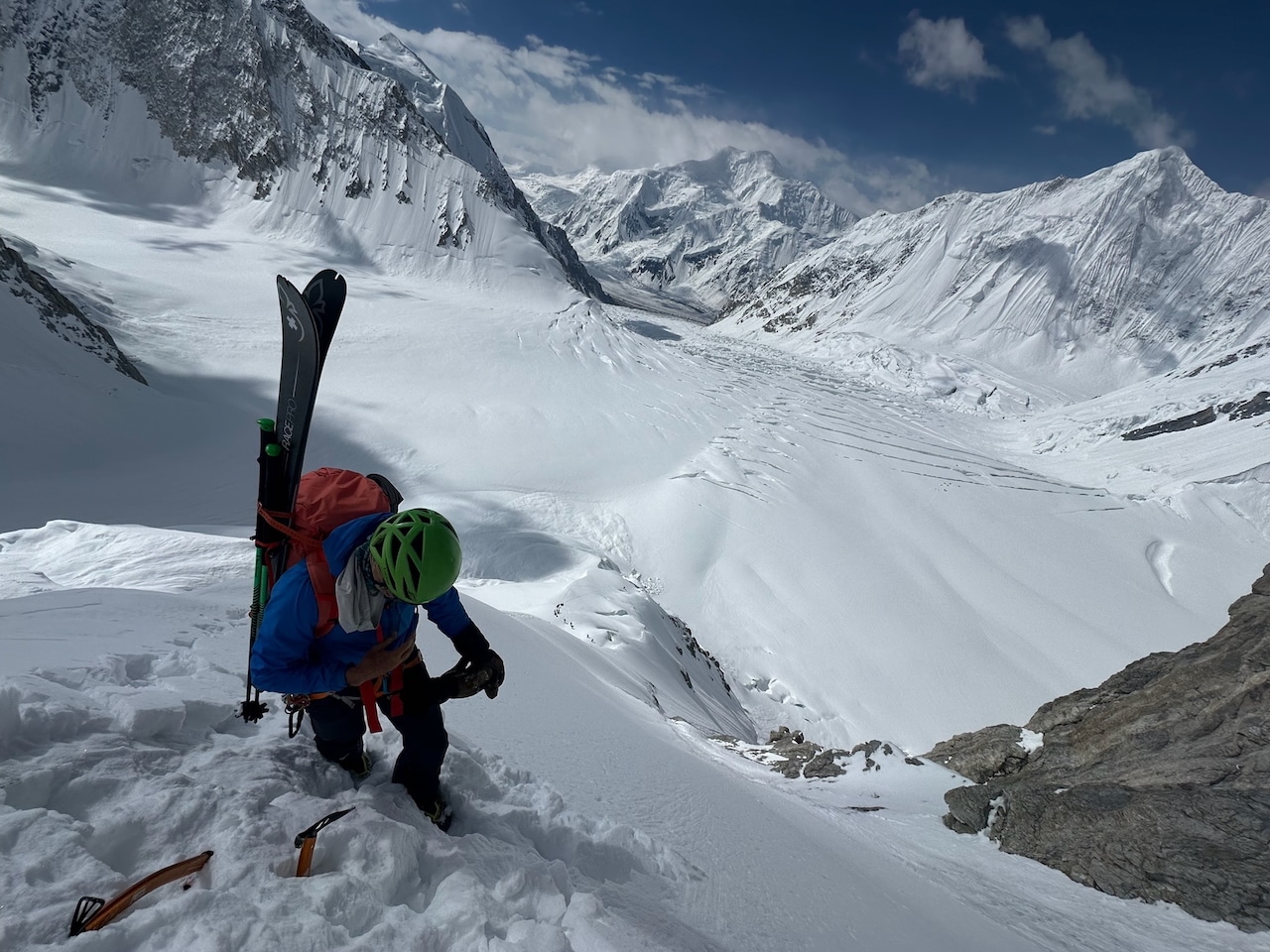
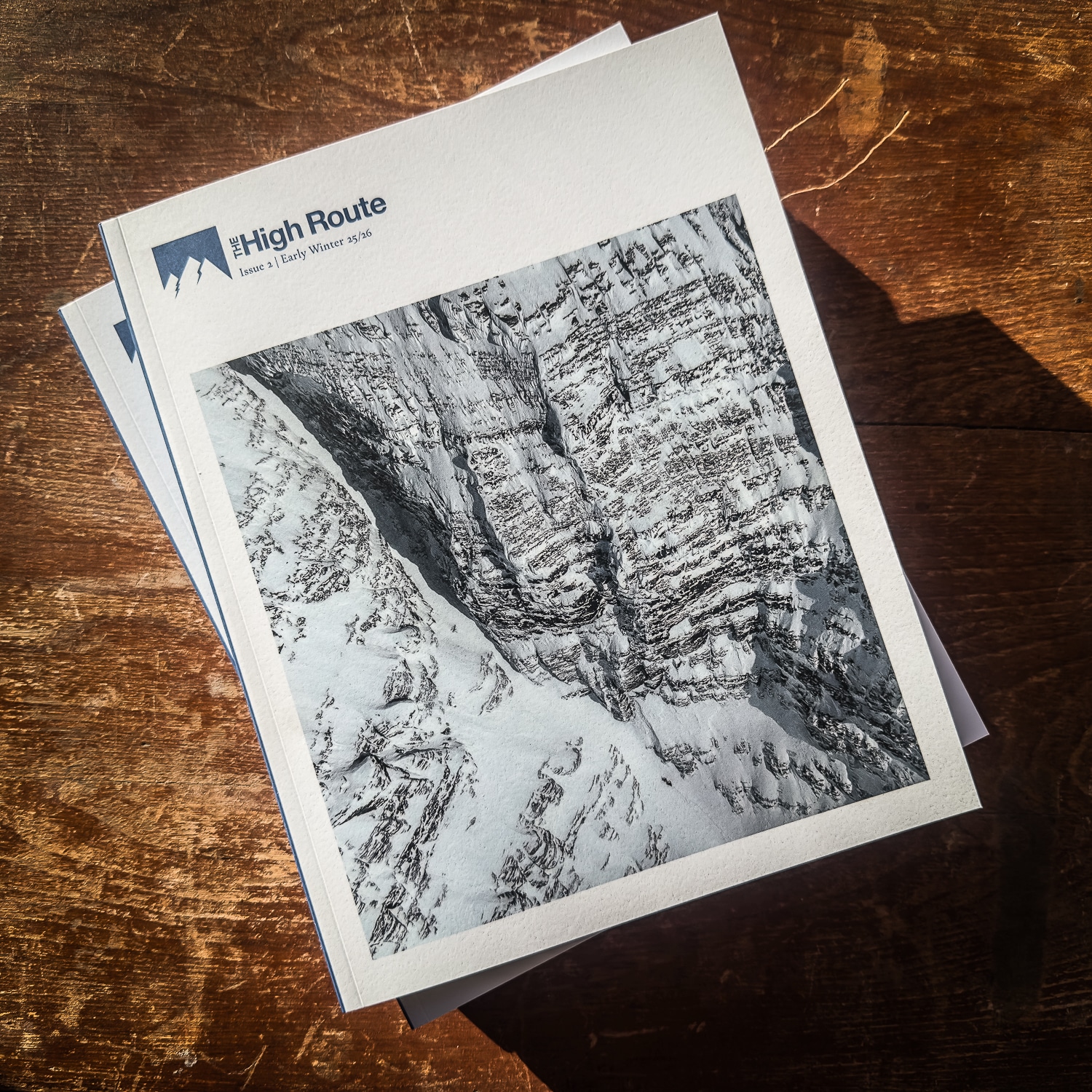
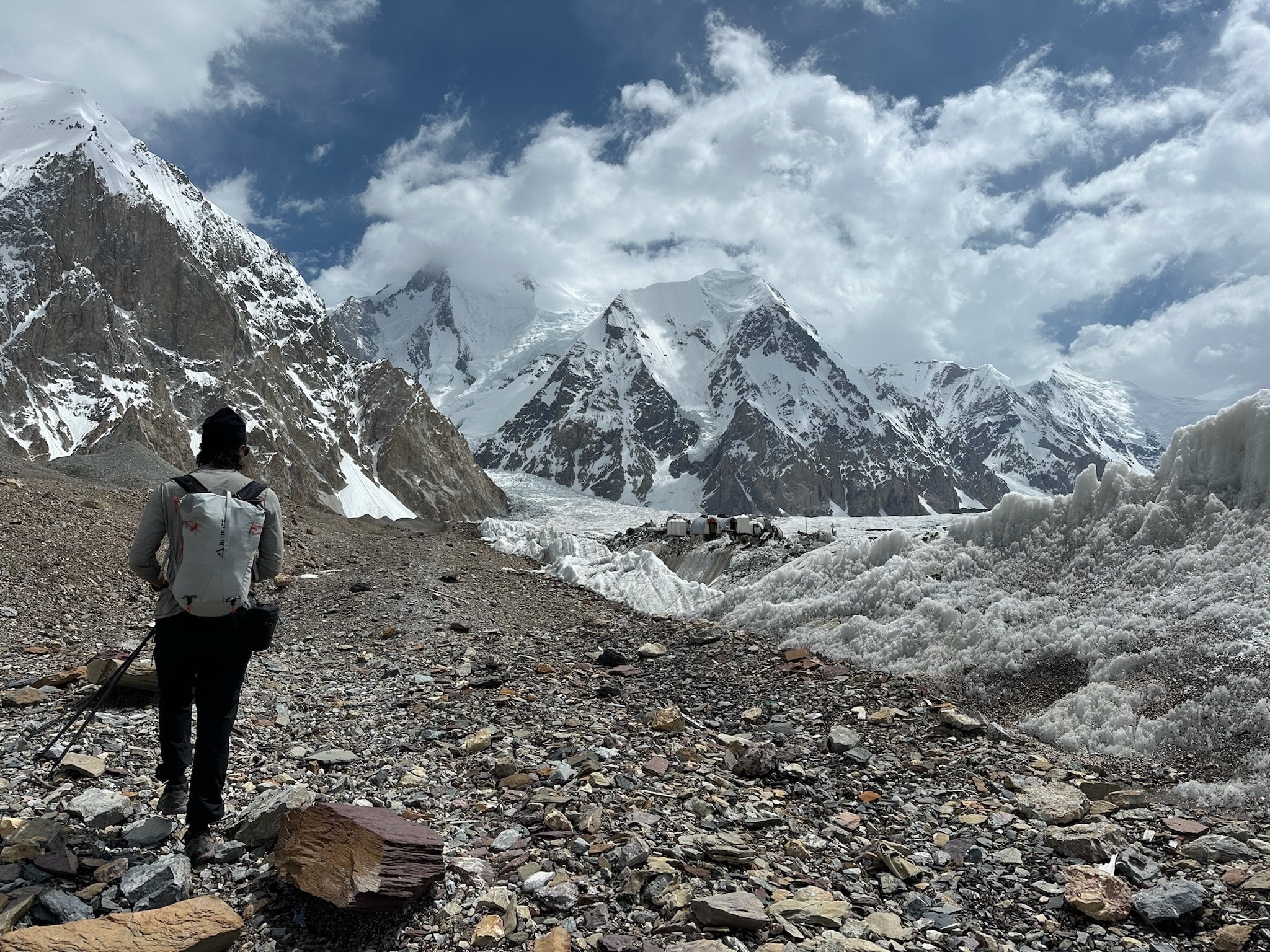
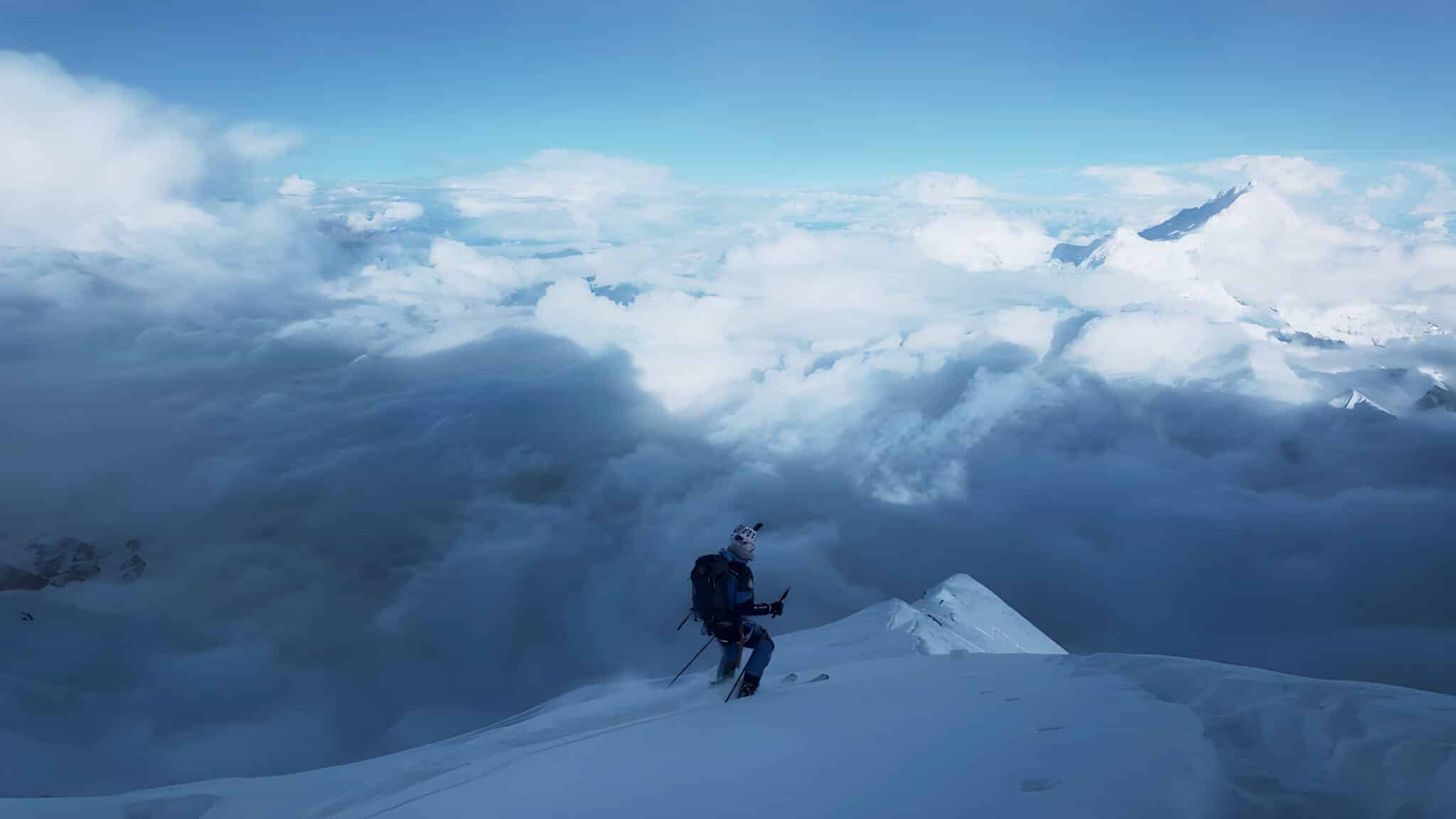
Leave a Reply
You must be logged in to post a comment.